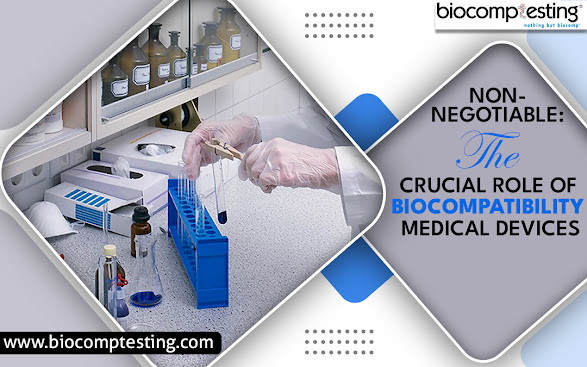Non-Negotiable: The Crucial Role of Biocompatibility in Medical Devices
In the realm of medical innovation, where breakthroughs and advancements happen at a rapid pace, one aspect stands as a non-negotiable cornerstone - biocompatibility. It’s not just a fancy term; it's the silent hero ensuring that medical devices seamlessly integrate with the human body. Let's unravel the vital role biocompatibility plays in the world of medical devices, with a focus on biocompatibility testing for dental materials.
The Basics: What is Biocompatibility?
Before we dive into the dental
chair, let's get our definitions straight. Biocompatibility refers to the
ability of a material to perform its intended function without causing adverse
effects on the biological system. In simpler terms, it's the Goldilocks
principle for medical devices — not too hot, not too cold, just right.
The Human Connection: Why It Matters
1. Safety First, Always: When it comes to medical devices, safety is paramount. Biocompatible materials ensure that the devices don't trigger harmful reactions within the human body. It's like having a superhero shield for your patients.
2. Avoiding Unpleasant Surprises: Imagine a dental implant causing an unexpected allergic reaction. Not pleasant, right? Biocompatibility testing helps avoid such surprises, ensuring that patients can rely on medical devices without fear of adverse effects.
Biocompatibility in Dental Materials
In the Mouth’s Spotlight: Dental materials face a unique challenge — they're right there in the mouth, exposed to saliva, temperature changes, and a barrage of munching forces. Biocompatibility is not just a bonus; it's a necessity to withstand the oral battlefield.
Championing Longevity: Dental work is
an investment, and patients want it to last. Biocompatible materials not only
ensure the safety of the patient but also contribute to the longevity of dental
devices, from crowns to implants.
Behind the Scenes: Biocompatibility Testing Unveiled
The Lab Odyssey: Have you ever wondered what happens in the lab when testing for biocompatibility? It's a meticulous process involving cell cultures, material extracts, and a series of evaluations to ensure that the material is friendly to its biological neighbours.
Regulatory High Five: Regulatory bodies
demand biocompatibility testing to ensure that medical devices meet the
necessary safety standards. It's not just a suggestion; it's a requirement to
bring these devices to market.
Future-Forward: Innovations in Biocompatible Materials
Smart Materials, Smarter Bodies: The world of biocompatible materials is evolving. From self-healing polymers to materials that interact intelligently with the body, innovation is paving the way for a new era of medical devices that are safe and incredibly smart.
Environmental Harmony: Beyond the human
body, there's a growing emphasis on ensuring that the materials used in medical
devices are environmentally friendly. Biocompatibility isn't just about us;
it's about the planet we inhabit.
The Bottom Line: No Compromise
So, the next time you're in that
dental chair or under the care of any medical device, remember —
biocompatibility is the silent guardian, ensuring your safety and the success
of the devices that enhance and sometimes save lives. Biocompatibility
for medical devices isn't just a buzzword; it's the non-negotiable
foundation upon which the future of healthcare rests.



Comments
Post a Comment